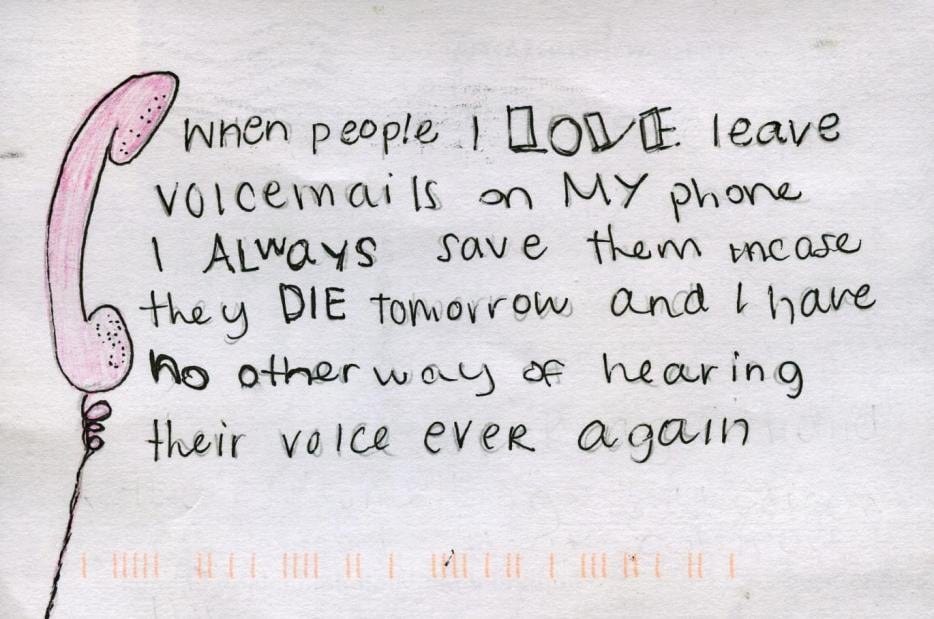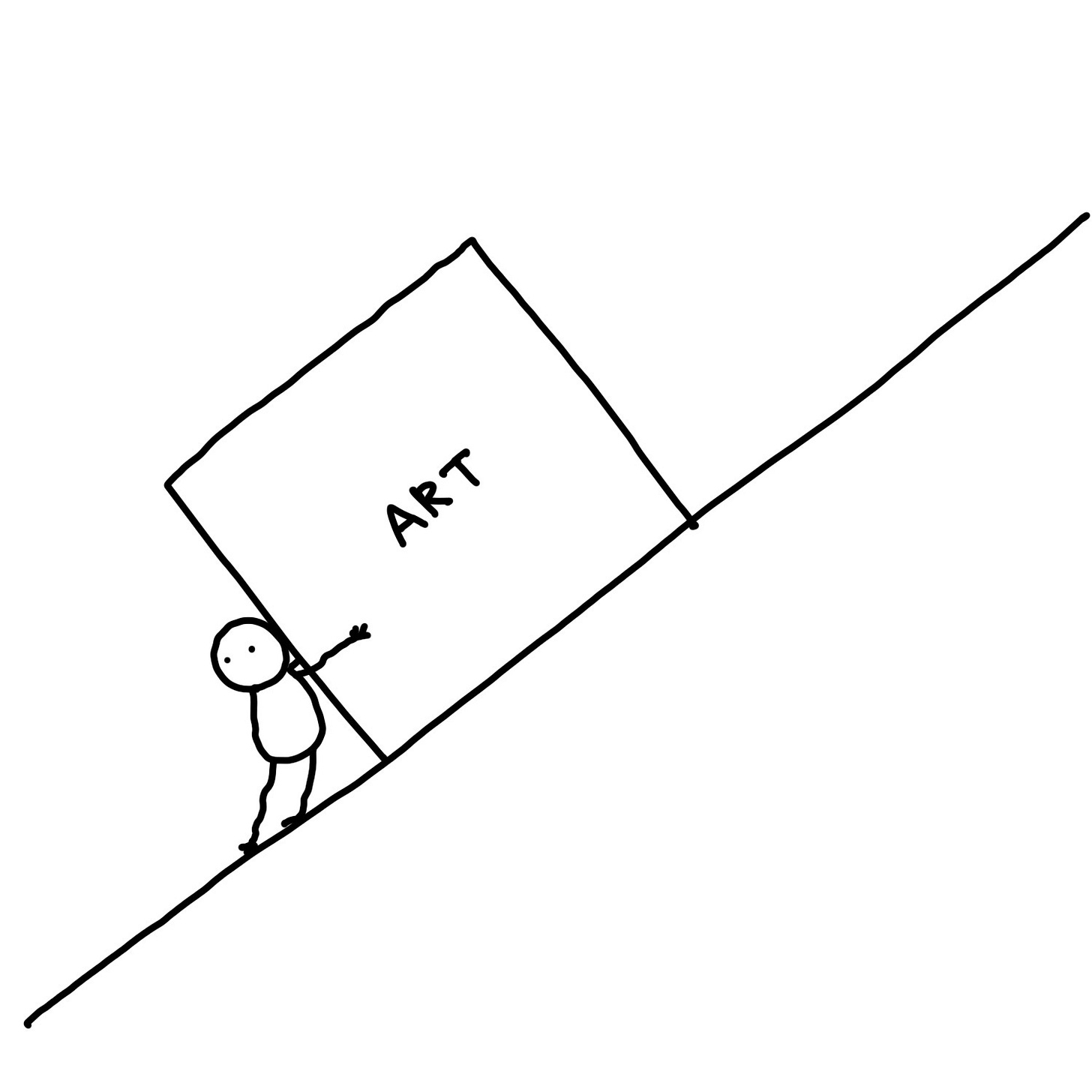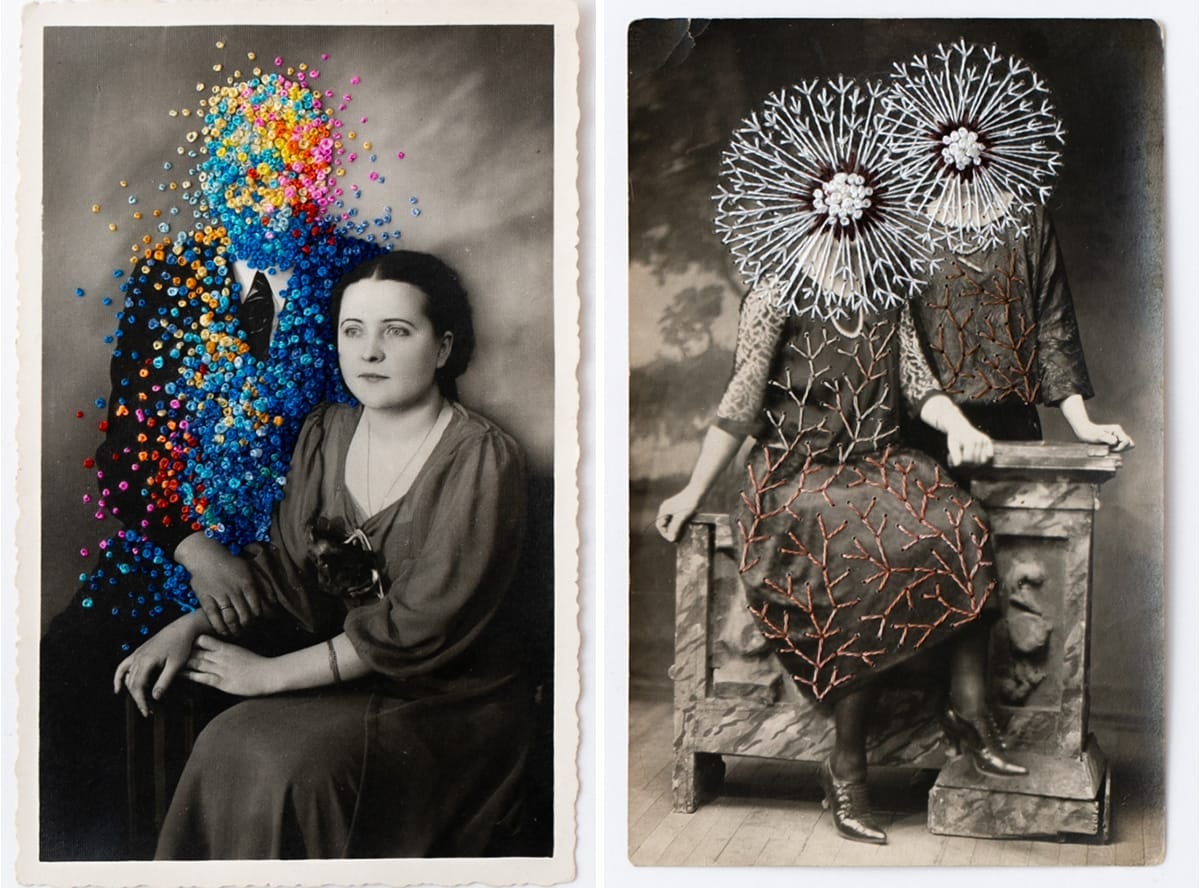Which way is up?
Hello there :)
Welcome to issue eighty of Manufacturing Serendipity, a loosely connected, somewhat rambling collection of the unexpected things I’ve recently encountered.
This newsletter is free to receive, but expensive to make :)
If you’d like to support me, and can afford to do so, please consider buying me a coffee. Your support means the world to me, and keeps this newsletter free for everyone.
Speaking of coffee, grab yourself a suitable beverage my loves, let’s do this thing…
First, a little shameless self-promotion…
I’m running a new cohort of my Digital PR ideation course!
Have you been tasked with coming up with ideas that gain linked coverage on top-tier media sites like the BBC, the Guardian, USA Today; but are wondering how on earth you do that?
Join me for this live cohort training course; it runs over a four-week period from 7th May, with a 90 minute workshop session delivered over Zoom each week.
Attendees will be guided step-by-step through the ideation process I personally use; I’ll suggest a range of exercises attendees might like to complete between sessions, plus they’ll be plenty of time for Q&A each week.
Tickets are on sale now - but they’re selling fast, join me, it’ll be lovely :)
Part I: Things I’ve been thinking about
My sense of direction is so bad, it’s almost useful — 98% of the time, if I think I need to go left, the way I actually need to go is right (the problem of course, is the 2% of the time when left is actually the way I need to go). I’m also unbelievably horrible at following the maps app on my phone (I like to walk in completely the wrong direction for five minutes before turning around and heading towards my desired destination).
Whenever I am somewhere new, I get lost. Not just in towns or cities, but in buildings too (I am the person who goes to the toilet in a bar, and then cannot find her way back to her friends).
My parents (both of whom have a good sense of direction, and are reasonably good navigators) are baffled by my ineptitude.
As a result, I was fascinated by this article: Why do some people always get lost?
Turns out, navigational ability doesn’t necessarily run in families:
“In 2020, Margherita Malanchini, a developmental psychologist at Queen Mary University of London, and her colleagues compared the performance of more than 2,600 identical and nonidentical twins as they navigated through a virtual environment to test whether navigational ability runs in families. It does, they found—but only modestly. Instead, the biggest contributor to people’s performance was what geneticists call the “nonshared environment”—that is, the unique experiences each person accumulates as their life unfolds. Good navigators, it appears, are mostly made, not born.”
Perhaps because I’m so bad at navigating, (and those around me know this), I rely heavily on others to navigate for me, and, as a result, have never given myself the opportunity to get good at it.
That might be true, but I’m not quite satisfied by this answer. In areas I’m familiar with, I can get around just fine. So what’s going on here?
“[There are] specific skills that are hallmarks of good navigators. These include the ability to estimate how far you’ve traveled, to read and remember maps (both printed and mental), to learn routes based on a sequence of landmarks, and to understand where points are relative to one another.
Much of the research, though, has focused on two specific subskills: route-following by using landmarks—for example, turn left at the gas station, then go three blocks and turn right just past the red house—and what’s often termed “survey knowledge,” the ability to build and consult a mental map of a place.
Of the two, route following is by far the easier task, and most people do pretty well at it once they’ve taken a route a few times, says Dan Montello, a geographer and psychologist also at UC Santa Barbara. In a classic experiment from almost two decades ago, Montello’s student Toru Ishikawa drove 24 volunteers, once a week for 10 weeks, on two twisting routes in a residential area of Santa Barbara that they’d never visited before.
Later, almost every person could accurately state the order of landmarks along each route and roughly estimate the distance travelled between them. But they varied widely in their ability to identify shortcuts between the two routes, point to landmarks not visible from where they stood, or sketch a map of the routes. Those who couldn’t identify shortcuts or find landmarks may suffer from an inability to create accurate mental maps, the researchers think.”

Dear reader, I would perform incredibly badly at both the task above, and the one below:
“Research by Newcombe and her then graduate student Steven Weisberg underscores the importance of such mental maps in navigation. They asked 294 volunteers to use a mouse and computer screen to navigate along two routes through a virtual town. Once the volunteers had learned the routes and the landmarks they contained, the researchers asked them to stand at one landmark and point to others on both routes.
People fell into three classes, the researchers reported in 2018 in Current Directions in Psychological Science. Some people had formed a good mental map: They could point accurately to landmarks on both the same and different routes. Others had good route knowledge but struggled to create an integrated map: They were good at pointing within a route, but poor between routes. A third group was poor at all the pointing tasks.
That ability to build and refer to a mental map—a person’s survey knowledge—goes a long way toward explaining why they’re better navigators, Montello says. “When the only skill you have is the ability to think in terms of routes, you can’t be creative to get around barriers.” Survey knowledge gives the ability to navigate creatively, he says. “That’s a pretty stunning difference.”
And finally the penny dropped.
Of course I’m bad at this! I struggle to build mental maps of places because I cannot make pictures in my head.
I, and other people like me, who can’t conjure mental images have a condition called aphantasia. Is the reason that I struggle (particularly in new places) because it takes me much longer to create a mental map? (Weirdly, I think I do have the ability to create a mental map, but I have to imagine that map, I can’t actually see it - there’s nothing visual there).
I’m guessing (as far as I know, no research has been done), that many people with aphantasia would struggle because of the mental mapping problem.
So here’s a question for my friends with aphantasia: how’s your sense of direction? Do you also spend inordinate amounts of time getting lost? Let me know :)
Serendipitous finds:
Meg Bernhard interviews PostSecret’s Frank Warren…

Two kinds of attention: narrow and wide
Austin Kleon shares some thoughts from Marion Milner on the magic of paying wide attention:
“(1) Narrow attention. – This first way of perceiving seemed to be the automatic one, the kind of attention which my mind gave to everyday affairs when it was left to itself. The psychology books seemed to agree in this. They said that you attend automatically to whatever interests you, whatever seems likely to serve your personal desires; but I could not find anywhere mentioned what seemed to me the most important fact about it, that this kind of attention has a narrow focus, by this means it selects what serves its immediate interests and ignores the rest. As far as I could see it was a ‘questing beast’, keeping its nose close down to the trail, running this way and that upon the scent, but blind to the wider surroundings. It saw items according to whether they served its purposes, saw them as a means to its own ends, not interested in them at all for their own sake. This attitude was probably essential for practical life, so I supposed that from the biological point of view it had to be one which came naturally to the mind. But since it saw everything in relation to something else, as a means to some end, contentment was always in the future.
(2) Wide attention. – The second way of perceiving seemed to occur when the questing purposes were held in leash. Then, since one wanted nothing, there was no need to select one item to look at rather than another, so it became possible to look at the whole at once. To attend to something and yet want nothing from it, these seemed to be the essentials of the second way of perceiving. I thought that in the ordinary way when we want nothing from any object or situation we ignore it. Or if we are forced to attend to something which does not offer us any means of furthering our desires, then sheer habit makes us attend in the narrow focus way, looking at separate details and being bored. But if by chance we should have discovered the knack of holding wide our attention, then the magic thing happens.”
A glorious series of comics from Steinbergdrawscartoons
Adam Moss interviews Cheryl Pope, Kara Walker and Louise Glück; on how they created three specific works; from glimmer, through struggle, to breakthrough.
Song lyrics are getting simpler, more repetitive, angry, and self-obsessed
“A team of European researchers analysed the words in more than 12,000 English-language songs across the genres of rap, country, pop, R&B and rock from 1980 to 2020.
[…]
“What we have been witnessing in the last 40 years is a drastic change in the music landscape – from how music is sold to how music is produced,” senior study author Eva Zangerle said.
Over the 40 years studied, there was repeated upheaval in how people listened to music. The vinyl records and cassette tapes of the 1980s gave way to the CDs of the 90s, then the arrival of the internet led to the algorithm-driven streaming platforms of today.
For the study in the journal Scientific Reports, the researchers looked at the emotions expressed in lyrics, how many different and complicated words were used, and how often they were repeated.
“Across all genres, lyrics had a tendency to become more simple and more repetitive,” Zangerle summarised.
The results also confirmed previous research which had shown a decrease in positive, joyful lyrics over time and a rise in those that express anger, disgust or sadness.”
Fiber Artist Han Cao’s Embroidered Photographs
“Through densely laid cross-stitches and whorls of thread, Han Cao revitalizes discarded photographs and postcards. Similar to the artist’s previous projects, her series New Nostalgia strikes a balance between the original subjects and the fiber-based additions. Sometimes covering faces with sparse dandelion puffs or confetti-like burst, Cao redefines the vintage pieces and explores how narratives linger…”
Part II: Books I’m Reading Right Now
A Little Luck, Claudia Pineiro (translated by Frances Riddle) — Mary Lohan returns to the Buenos Aires suburb she fled from twenty years earlier, where she is forced to finally confront her past. It’s a story about the debilitating weight of lies, the messy line between bravery and cowardice, and the tragedies, big and small, that can ripple out from a single decisive event. Gorgeous.
The Years, Annie Ernaux (translated by Alison L. Strayer) — a memoir spanning fifty years (1941-2006), told through vignettes of memory, cultural habits, language, photos, books, songs, radio, television, advertising, and news headlines. It’s an account of twentieth-century French history refracted through the life of one woman. Brilliant.
Red Memory (the afterlives of China’s Cultural Revolution), Tania Branigan — nearly fifty years after its conclusion, the Cultural Revolution’s scar runs through the heart of Chinese society. But official suppression and personal trauma have conspired in national amnesia: it exists, for the most part, as an absence. Here, Branigan explores the stories of those driven to confront the era, who fear for, or yearn for its return. Engagingly written, it’s a haunting study on the impact on the lives and psyche of a country, a meditation on memory, and the struggle for ownership of history.
Part III: Things I’ve Been Watching
The Three Body Problem (Netflix) —I’ve not read Liu Cixin’s novel which this series is based on, so I can’t speak to the extent to which the series honours the source material; it’s definitely slick, and has high production values, but ultimately it left me a little cold. It’s ok I guess? Maybe I’d prefer the book.
Scoop (Netflix) — this dramatised version of Prince Andrew’s Newsnight interview has attracted criticism for placing too much emphasis on the story of producer Sam McAlister; but I thought it was great.
Baby Reindeer (Netflix) —based on Richard Gadd’s one-man show, this true story of stalking and sexual violence is understandably difficult to watch. Gadd unflinchingly confronts and processes his trauma here (warning: a lot of the material is extremely triggering) — and it’s utterly compelling.
Part IV: What I’ve been up to…
I had an amazing time at the Digital PR Summit, I watched some great talks, got to hang out with old friends and make some new ones, and ate some really great tapas.
What’s next?
I am excited about:
Spending this weekend with my Dad
Heading to BrightonSEO next week
Celebrating my birthday with my friends
Shameless self-promotion
Planning on heading to BrightonSEO in either April or October this year? If so, you might like to sign up for my in-person Content Creation for Digital PR training course.
Looking to improve your ideation skills? Tickets for the new cohort of my Ideation for Digital PR Course are on sale now. Full course details can be found here & you can book your spot here.
That’s all from me for now :)
If you enjoyed this newsletter, please consider sharing it, and if you would like to support me you can buy me a coffee.
Big love,
Hannah x
PS Wanna find out more about me and my work? Head over to Worderist.com





